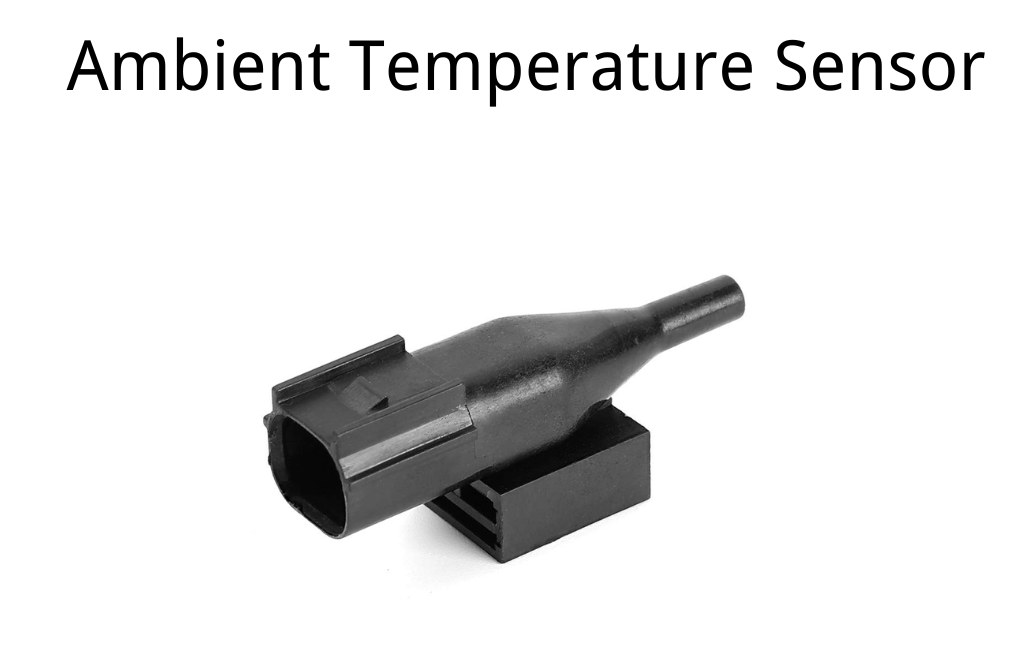You might not think much about the Ambient Temperature Sensor (ATS) as you drive, but this small part has a huge role in your car’s efficiency and performance. It’s often overlooked, yet without it, your vehicle’s engine wouldn’t run smoothly. This guide dives into what the ATS does, common issues it causes, and how to make sure it's working right.
What Exactly is the Ambient Temperature Sensor?
At its core, the Ambient Temperature Sensor is a simple device. It measures the temperature of the air around your car and sends that information to your Engine Control Module (ECM). The ECM takes that data and makes adjustments to the engine, helping optimize fuel delivery, ignition timing, and emissions control. Without accurate temperature readings, your engine can suffer, resulting in poor performance and unnecessary emissions.
How Does the Ambient Temperature Sensor Work?
Think of the ATS as a thermometer for your car. It constantly checks the temperature outside and relays that info to the ECM. The ECM uses this data to adjust crucial engine settings. This means that your vehicle can adapt to varying weather conditions, ensuring that you’re always driving with maximum efficiency, whether it’s a hot summer day or a freezing cold morning.
The Key Adjustments the ATS Helps With:
- Fuel Delivery: Temperature directly affects fuel needs. The ATS ensures your ECM knows exactly how much fuel is required to keep things running smoothly.
- Ignition Timing: Changes in temperature also affect when the engine should fire the fuel. Accurate data from the ATS allows the ECM to make precise timing adjustments.
- Emissions Control: With the right temperature information, the ATS helps your car burn fuel more efficiently, minimizing emissions.
Different Types of Ambient Temperature Sensors
ATS systems come in several variations, each suited to different vehicle types and purposes. Here’s a breakdown of the most common ones:
1. NTC Thermistors
These sensors are cheap and reliable. As the temperature rises, the resistance decreases, providing a solid, accurate reading. They’re widely used because they’re effective and inexpensive.
2. IC Temperature Sensors
These tiny but powerful sensors are built into modern cars. They’re easy to integrate into electronic systems, offering precise temperature readings. Their compact size makes them perfect for tight spaces.
3. Infrared (IR) Sensors
Infrared sensors don’t even need to touch the object they’re measuring. They detect thermal radiation, which is useful in automotive systems like HVAC, where the interior temperature is constantly being adjusted for comfort.
Symptoms of a Faulty ATS: What to Look Out For
When your ATS isn’t working, things can go wrong fast. Here’s how to tell if your sensor is on the fritz:
1. Sluggish Engine Performance
Inaccurate temperature readings can mess with your engine's fuel mixture. This can lead to a drop in power, poor acceleration, and a general sluggishness.
2. Increased Emissions
Your vehicle might fail emissions tests if the ATS isn’t working. Without the right temperature data, the engine struggles to burn fuel efficiently, leading to a rise in emissions.
3. Poor Fuel Economy
A broken ATS can throw off your car's fuel management, making it burn through gas faster than it should.
4. Cold Start Problems
Have trouble starting your car in the cold? A malfunctioning ATS might be to blame. It can mess with idle speed and fuel delivery, making cold starts rough.
5. HVAC System Problems
In some cars, the ATS also helps regulate the heating and air conditioning systems. If it fails, your cabin temperature may not stay consistent, leaving you uncomfortable during the drive.
Why Do ATS Fail?
A few things can cause your ATS to fail, and they’re worth understanding to prevent problems down the road:
1. Physical Damage
The sensor or wiring can become damaged over time, especially if your car has been through rough conditions or a minor collision.
2. Exposure to Moisture or Contaminants
Moisture, road salt, and other chemicals can wreak havoc on the sensor, causing corrosion or contamination. This disrupts its ability to function properly.
3. Electrical Issues
Wiring problems, blown fuses, or faulty relays can mess with the sensor’s power supply, leading to malfunction.
4. Wear Over Time
Just like any component in your vehicle, the ATS can wear out with age. If it’s been a few years since you replaced it, it might be time for a check-up.
Diagnosing ATS Problems: How to Do It Right
If you suspect your ATS is malfunctioning, here’s how to check it:
1. Visual Inspection
Take a close look at the sensor and wiring. Look for any visible damage like cuts, frayed wires, or loose connections that might affect performance.
2. Use a Multimeter
Check the continuity of the wiring with a multimeter. Make sure the sensor is getting the correct voltage.
3. Diagnostic Tools
Plug in an OBD2 scanner to see if there are any error codes tied to the ATS. This can give you a more precise idea of what’s wrong.
4. Service Manual
Always refer to your vehicle’s service manual for specific diagnostic steps. It might provide additional troubleshooting tips.
The Cost of Replacing an ATS
Replacing the ATS isn’t typically a costly repair. Depending on your car’s make and model, parts and labor can range from $20 to $100. High-end or luxury cars might cost a bit more, so it’s best to ask your mechanic for an estimate before getting started.
How to Maintain Your ATS for Long-Term Health
Keep your ATS in good working order with these simple maintenance tips:
- Regular Inspections: Periodically check the sensor and wiring to catch any wear and tear before it becomes a bigger problem.
- Protect from Moisture: If you live in a rainy or snowy area, try to protect the sensor from moisture and corrosive elements.
- Keep it Clean: Dirt and road salt can build up and affect performance. Make sure to clean around the sensor regularly.
Conclusion
While it may be small, the Ambient Temperature Sensor plays a huge role in your vehicle’s efficiency, performance, and emissions control. It’s a crucial part of the complex systems that keep your engine running smoothly. If you notice any performance issues or suspect your ATS is malfunctioning, it’s always better to address it sooner rather than later. Taking care of this part today can help avoid costly repairs down the road.
FAQs
Can I still drive with a faulty ATS?
Technically, yes, but it’s not recommended. A malfunctioning ATS can affect engine performance, fuel economy, and emissions. You should get it fixed sooner rather than later.
How do I know if my ATS is failing?
Look for signs like poor engine performance, increased emissions, or trouble starting your car, especially in colder weather.
How long does an ATS last?
Typically, an ATS lasts for several years, but environmental factors and wear can shorten its lifespan.
Can I replace the ATS myself?
It’s possible, but it depends on your vehicle. If you're not sure, it’s always safer to have a professional mechanic handle the replacement.




Leave a comment
This site is protected by hCaptcha and the hCaptcha Privacy Policy and Terms of Service apply.